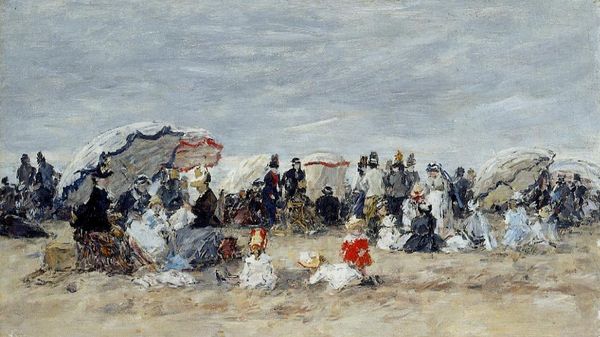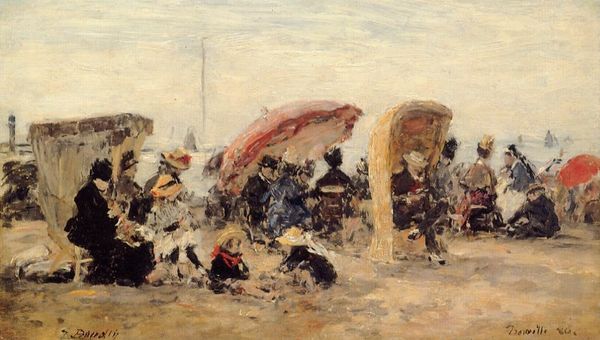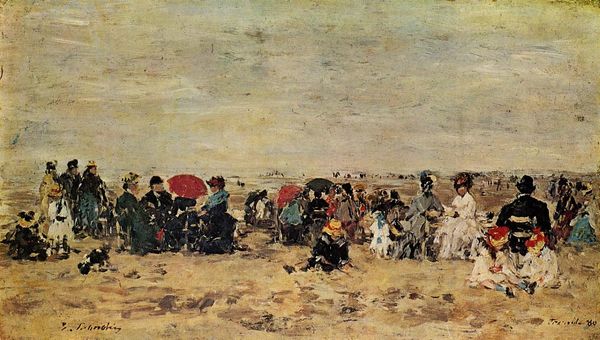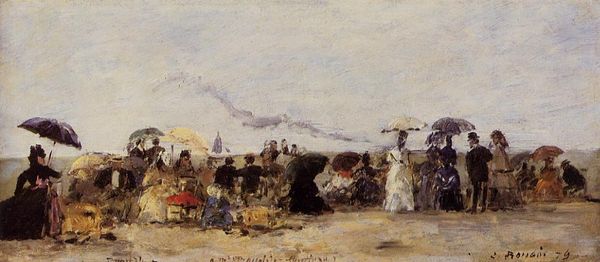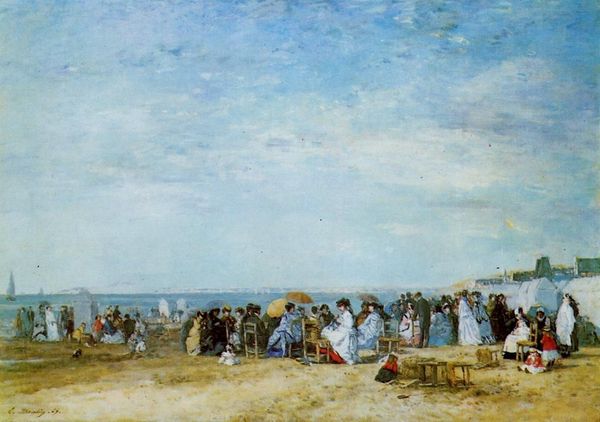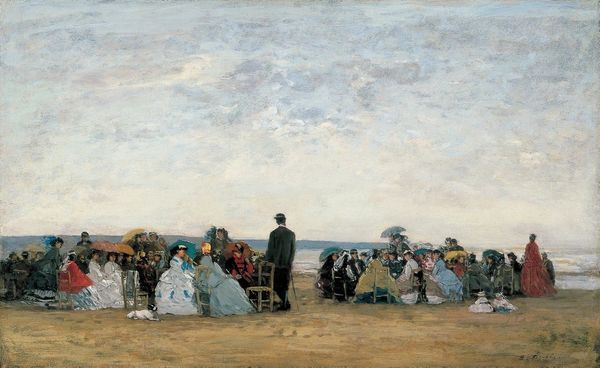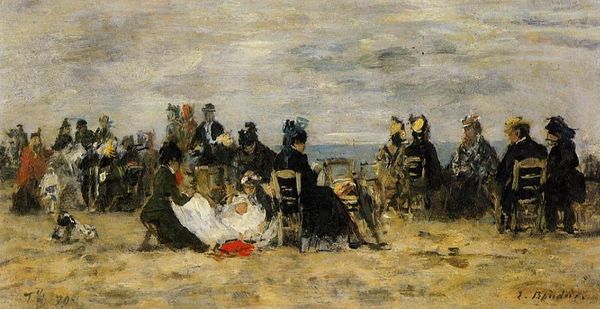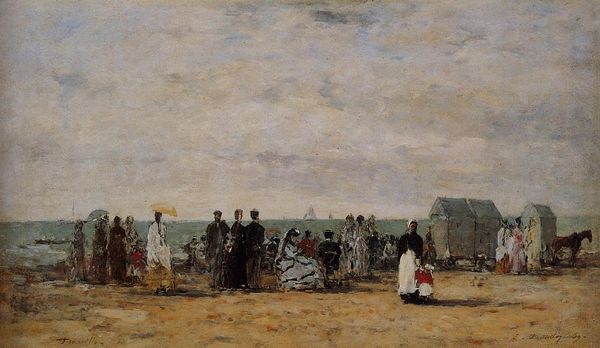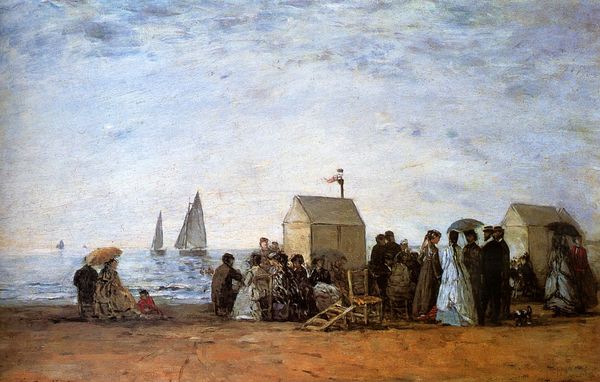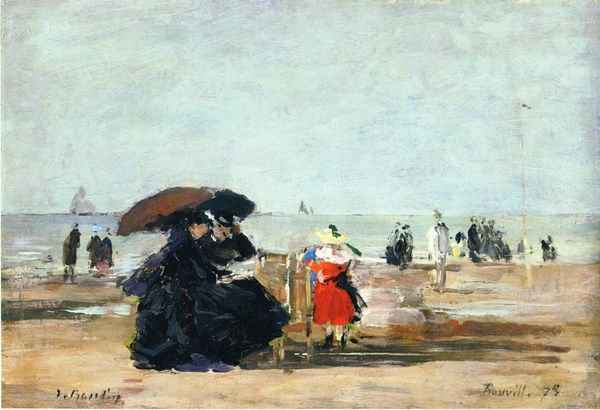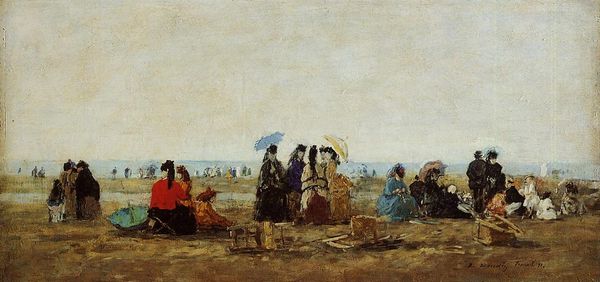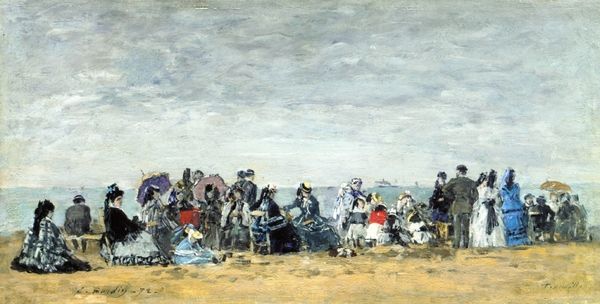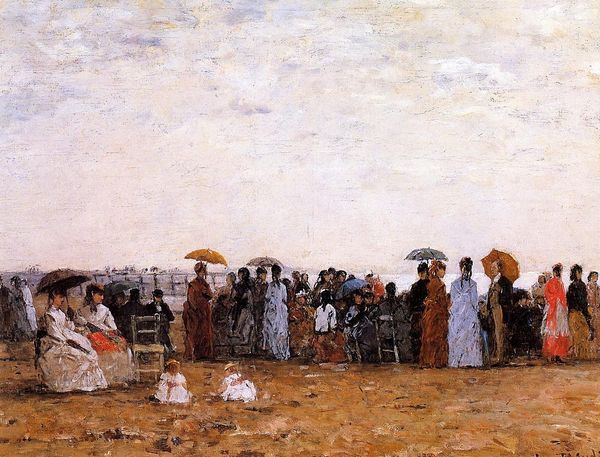
painting, plein-air, oil-paint
#
portrait
#
painting
#
impressionism
#
plein-air
#
oil-paint
#
group-portraits
#
ashcan-school
#
cityscape
#
genre-painting
#
mixed medium
#
mixed media
#
watercolor
#
realism
Copyright: Public domain
Curator: William Glackens’ “Fruit Stand, Coney Island” presents a vibrant slice of early 20th-century urban life. Look at the interplay of color and light that defines this Ashcan School painting. What’s your immediate response to its visual qualities? Editor: I'm immediately struck by the sense of bustling energy. There’s a sort of hazy quality, a visual impression more than a photographic rendering. You can almost smell the ripe fruit and feel the heat rising off the Coney Island beach. It feels very sensory. Curator: Exactly. The artist employs loose brushstrokes and a muted palette, characteristic of his realist style, capturing a fleeting moment with deft economy. Note how the composition is anchored by the strong verticals of the fruit stand, contrasted against the dynamic crowd. Editor: I’m intrigued by the materials themselves. It is seemingly an oil painting and the artist really focuses on the everyday, doesn’t he? It’s not just about documenting the scene, but conveying a specific social context, the leisure activities of a rising urban middle class and those who attend to them in the market. I can almost see how people labored under those vendors’ stands and out of public view, to make days at Coney Island comfortable. Curator: I appreciate how you foreground the socio-economic dimensions inherent within the composition, but consider how Glackens deploys Impressionistic techniques – capturing a sense of immediacy and fleeting atmosphere through color and form. Observe, in particular, how the clusters of figures are treated with varying degrees of focus, creating spatial depth and rhythmic visual movement. Editor: While those visual aspects are clear, to truly engage with the painting's power, we must consider the conditions of its making. It's interesting that Glackens turned to paintings after his commercial illustration career took off and he could explore other opportunities to depict what he sees fit and for himself. His ability to choose his subjects became important here, because as society becomes increasingly commercialized, the very means of representation, like painting, carry economic implications. This highlights a shift from the private art academy to publicly available art making and viewing for the urban dweller. Curator: You bring a critical lens to our understanding. Ultimately, it's about finding a synthesis between an appreciation for Glackens’ skillful formal rendering and what the image embodies within its historical moment. Editor: Absolutely, appreciating not only what's depicted but how it echoes within the world beyond its frame.
Comments
No comments
Be the first to comment and join the conversation on the ultimate creative platform.
